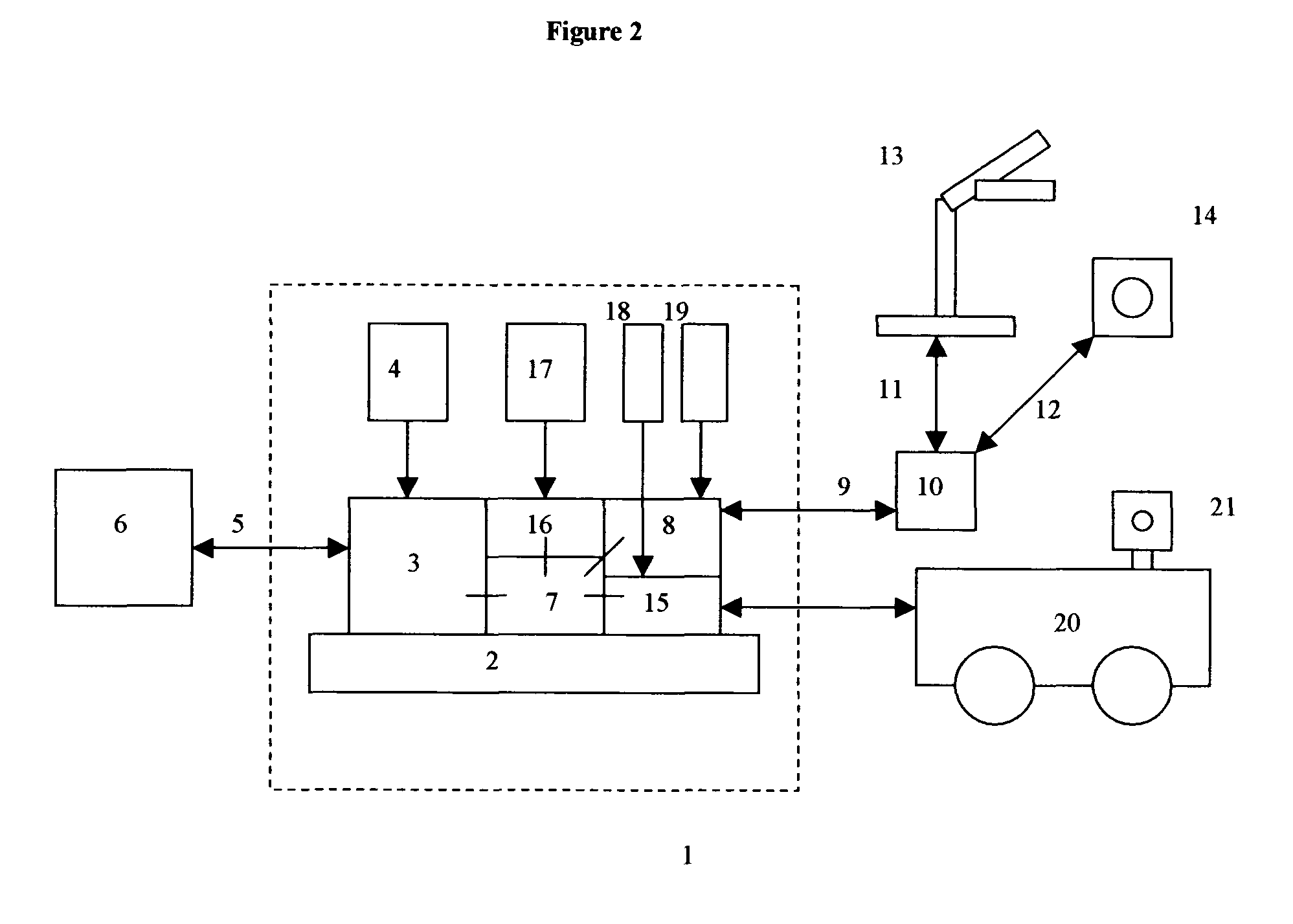Mobile robotic system with web server and digital radio links
- Summary
- Abstract
- Description
- Claims
- Application Information
AI Technical Summary
Benefits of technology
Problems solved by technology
Method used
Image
Examples
Embodiment Construction
[0059]FIG. 1 shows the general hardware scheme, employing a single mobile robot and two exemplary external SBDRL devices. A mobile robot (1), equipped with its own onboard camera (2), sends HTML files using the HTTP protocol on telecommunications link (3) to a web browser running on remote internet site (4). In response to CGI data sent back from the user on web browser (4) to the CGI interface of the robot's onboard web server, as well as the robot's own onboard commands, the mobile robot (1) moves into close proximity with SBDRL enabled external devices, such as a external robotic arm (5) and a external camera (6). The mobile robot (1) uses SBDRL radio signals (7), (8) to discover the presence and functionality of the robotic arm (5) and camera (6). The robot relays information from its own onboard camera (2) and the external camera (6) to remote Internet browser (4). The remote user may then direct the robot to send SBDRL signals to control the movement of external robotic arm (5...
PUM
 Login to View More
Login to View More Abstract
Description
Claims
Application Information
 Login to View More
Login to View More - R&D
- Intellectual Property
- Life Sciences
- Materials
- Tech Scout
- Unparalleled Data Quality
- Higher Quality Content
- 60% Fewer Hallucinations
Browse by: Latest US Patents, China's latest patents, Technical Efficacy Thesaurus, Application Domain, Technology Topic, Popular Technical Reports.
© 2025 PatSnap. All rights reserved.Legal|Privacy policy|Modern Slavery Act Transparency Statement|Sitemap|About US| Contact US: help@patsnap.com



